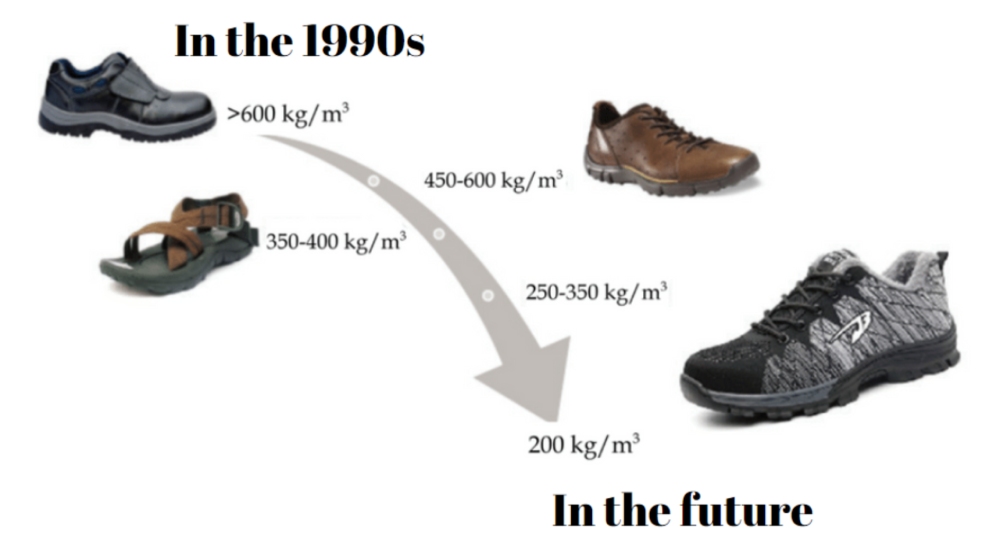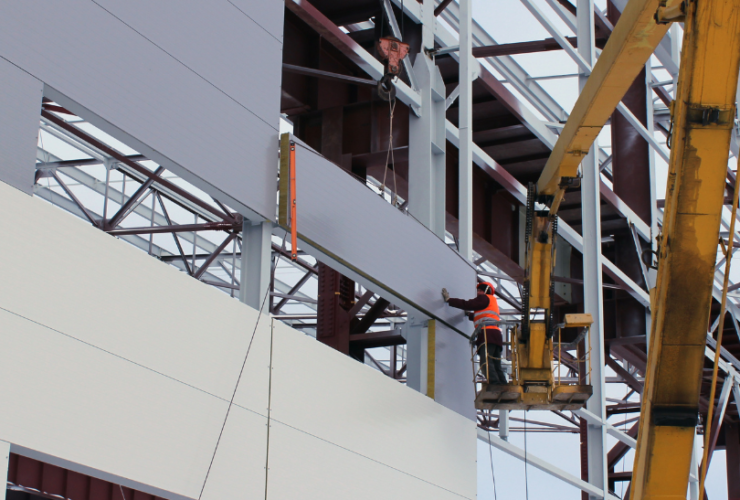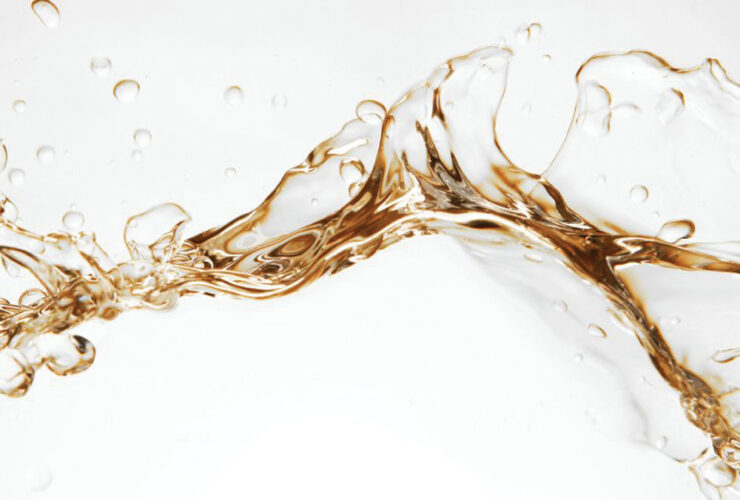Polyurethane is commonly preferred in the footwear industry, since it meets the main criteria to produce soles, slippers, and insoles thanks to its features such as comfort, flexibility, durability and lightness. It is used in a wide area from the production of low-density slipper soles to the production of work shoe soles that require high flexibility and durability.
Every year, shoes sector changes in line with needs of users and market size of the sector expands. While shoe soles in 500-600 kg/m3 density were preferred in 2000s; today, both resistant and lighter soles are preferred.
In the past, majority part of market share was owned by EVA and TPU products, but Kimpur has changed this with its investments and premium production methods and accelerated the sector by developing lighter, but resistant sole systems which are preferred more.

The Use of Polyurethane in the Production of Sports Shoe Soles
The comfort and lightness of sports shoes can have the power that will have an impact on your entire performance.
The soles of sports shoes produced with polyurethane provide a high level of comfort while exercising due to the ultra-soft and flexible structure of polyurethane. It offers long-term use thanks to its comfort, lightness, and high impact resistance features. Thanks to these superior advantages, polyurethane is often preferred in the production of sports shoe soles.
Our low-density sports shoe sole system that we have developed as Kimpur at our R&D center provides outstanding advantages such as higher flex, elasticity and comfort, which are the most important properties of shoe sole, as well as weight advantages.
With KIMfoot® Sports Shoe Sole System, soles can be products in 380 – 420 kg/m3 molded density. In addition, it has a uniform skin that is easily distributed in the mold thanks to superior reaction profile and short demolding time. Despite of low density, it meets the hardness (45-50 shA) property expected by the market from sports shoe soles. Reaction profile and physical properties of the system are given in Table 1.
Developed with devoted operations of our strong R&D team, our KIMfoot Sports Shoe Sole System may be diversified with small contributions and converted into spring-summer systems. This enables our customers to work in a wide variety of products and enhance production efficiency.
Table.1
| KIMfoot Sports Shoe Sole System | |||
| Unit | Value | Method | |
| Rate* | By Weight | 100/96±2 | KİMPUR INTERNAL METHOD |
| Swelling Time* | sec | 9±2 | KİMPUR INTERNAL METHOD |
| Time for Not Sticking to Hands* | sec | 33±4 | KİMPUR INTERNAL METHOD |
| Moldıng tıme* | sec | 195±15 | KİMPUR INTERNAL METHOD |
| Free Rise Density* | kg/m3 | 200±5 | KİMPUR INTERNAL METHOD |
| Physical properties | |||
| Molded Density | kg/m3 | 380-420 | ISO EN 845 |
| Hardness | shA | 45±5 | DIN ISO 7619 -1 |
| Number of Steps – 14 °C | unit | >30000 | TS EN ISO 17707 |
| Extension | % | 550 | DIN 53504 |
| Crushing under Pressure | % | 35 | TS EN ISO 1856 |
| Tear Resistence | N/mm | 7 | DIN ISO 34-1 |
*Values are obtained in laboratory under 40°C temperature and at 5000rpm mixing rate. Values given may vary depending on process conditions and mold shape.
Comparison table of competitive company systems obtained from sports shoe sole producers is given in Table 2. This table contains test results for density, hardness, flex and etiolating of those soles. According to the comparison, it is seen that KIMfoot Sports Shoe Sole System shows the best performance The distinguishing properties of our products among our competitors are comfort, elasticity and opportunity to work in low density. This low-density system that we have developed recently passed the step test that is one of the most important proper expected from a shoe with high performance in accordance with TS EN ISO 17707 standard and provides a successful result with 100.000 steps.
Table.2
| COMPARISON TABLE FOR SPORTS SHOE SOLE SYSTEMS | ||||
| COMPANY | DENSITY (kg/m³) |
HARDNESS (ShA) |
FLEX ( -14°C number of steps) |
ETIOLATING** (hour) |
| KIMfoot Sports Shoe Sole System | 375 – 450 | 45 – 50 | 100.000 | 3 |
| COMPETITOR-1 | 500 – 510 | 55- 58 | 100.000 | 1 |
| COMPETITOR-2 | 400 – 450 | 45 – 46 | 32.600 | 2 |
| COMPETITOR-3 | 480 –510 | 48 – 52 | 100.000 | 3 |
| COMPETITOR-4 | 450 | 45 | 100.000 | 3 |
| COMPETITOR-5 | 450 | 52 | 39.600 | 3 |
| COMPETITOR-6 | 480 – 500 | 45 – 50 | 24.700 | 2 |
| COMPETITOR-7 | 440 – 490 | 45 – 55 | 100.000 | 1 |
** The term when soles kept under 300 watt UV lamp resist against etiolating.
With KIMfoot Sports Shoe Sole System, a system which provides production upon demands of our customers, is easy to be processed when compared to local and global competitive products, has superior performance in filling mold and walking in mold and ensures a production term advantage with grammage has been developed. As Kimpur R&D team, we maintain our operations at our simulation center with low-pressure machine and necessary equipment by simulating production conditions of our customers one by one and obtaining correct analyses and quick results in line with their needs.
As Kimpur, we carry out our activities as a company followed in Turkish and world market thanks to innovative products and extraordinary solutions.
Kimpur R&D Footwear Team








